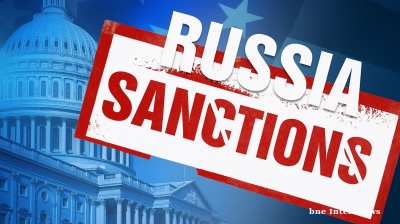The devastating earthquake that struck Morocco on the night of Friday, 8 September has left a trail of destruction with an estimated 2,500 dead at the last count, in a death toll that is bound to rise further.
The epicentre of the earthquake, measuring 6.8 in magnitude, was located in the High Atlas Mountains, approximately 71 kilometres south-west of Marrakech. This event marked the most potent earthquake Morocco has experienced in over a century, and experts are cautioning that aftershocks may continue to occur in the coming days and weeks.
The full extent of the damage is still under assessment, but Marrakech has suffered severe damage, particularly in the Medina area, a UNESCO heritage site. Shortages of essential resources like water and electricity have further compounded the crisis. Blocked roads have hindered access to many villages, making it difficult to ascertain the extent of destruction nearer to the epicentre.
Apart from the catastrophic human toll, there will be economic ramifications in the short term. The four regions surrounding the epicentre – Marrakech-Safi, Souss-Massa, Beni Mellal-Khenifra and Draa-Tafilalet – collectively contributed to nearly a quarter of Morocco's GDP in 2021. It should be noted, however, that due to peculiarities in national accounting, GDP can temporarily increase after a natural disaster due to the subsequent reconstruction work being counted as increased economic output.
These regions also play a substantial role in Morocco's primary, secondary and tertiary sectors. There is concern that damage to land and crops may further strain Morocco's domestic food supply, which had already been impacted by severe drought in recent years, potentially leading to higher food inflation.
The repercussions could also extend to other regions, as Morocco is a significant exporter of tomatoes to the EU. However, much of Morocco's industry is located further away from the earthquake's epicentre, in places like Tangiers and Rabat, that is expected to be relatively unaffected.
Tourism is a significant part of Morocco's economy, accounting for approximately 7% of national GDP, with tourism receipts contributing about 8% of GDP. While the peak tourism season has passed, there may still be a decline in visitor arrivals in the coming months, as over 40% of tourists in 2023 have visited areas directly affected by the earthquake. Safety concerns may deter tourists, despite reports suggesting limited disruption to tourism services.
Despite the potential impact on tourism receipts, Morocco's external position remains relatively strong compared to its North African counterparts. The current account deficit narrowed to 3.2% of GDP in the first quarter and is financed by stable direct investment inflows. Morocco has also built substantial foreign exchange reserves, amounting to $32.8bn, which comfortably cover its gross external financing requirements. Additionally, Morocco has access to a $5.0bn flexible credit line from the International Monetary Fund (IMF), a testament to its strong fundamentals.
“Morocco’s fiscal position is also better placed than those elsewhere in the region,” James Swanston, a Middle East and North Africa economist with Capital Economics, said in a note. “There is scope for the government to deal with the effects of the earthquake through looser fiscal policy. Indeed, it is widely expected at a meeting later today that the government will approve the launch of an Earthquake Relief Treasury Account. That said, policy would need to be tightened again in subsequent years in order to place the debt position on a sustainable footing.”
“Finally, there is a political angle to all of this. There had already been bubbling frustration at the King’s growing absence from public life in recent years and, in reports, King Mohammed VI has been referred to as the “missing king” and officials have said “we’re a plane without a pilot”. It is notable that the king has taken a more prominent role in response efforts so far but, even so, there’s a risk that recent frustration boils over, particularly with rural communities struggling with a lack of support and aid so far,” Swanston concluded.
Opinion

BEYOND THE BOSPORUS: Consumed by the Donald Trump Gaza Show? You’d do well to remember the Erdogan Episode
Nature of Turkey-US relations have become transparent under an American president who doesn’t deign to care what people think.

COMMENT: ANO’s election win to see looser Czech fiscal policy, firmer monetary stance
The victory of the populist, eurosceptic ANO party in Czechia’s parliamentary election on October 6 will likely usher in a looser fiscal stance that supports growth and reinforces the Czech National Bank’s recent hawkish shift.

COMMENT: Ukraine's drone attacks on Russian refineries have probably reduced throughput by 30.4%, less than headline figures suggest
Ukraine has been hitting Russian refineries and caused a fuel crisis that has spead across multiple regions. The headline figure is that oil refining has been reduced by 38% since August, but digging into it and the reduction is likely less.

MACRO ADVISORY: The unintended consequences of Western sanctions
Since 2014, Western nations have hit Russia with a total of 26,655 sanctions (to mid-September 2025), with 23,960 coming after February 2022. The largest target group, with 13,611 sanctions, is state officials, business owners, and oligarchs.




